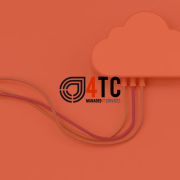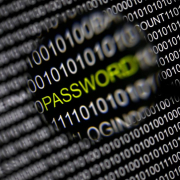Get more from remote working with VoIP
The classic office was permanently gone from the contemporary workplace only a few years ago. It is no accident that our reliance on technology has increased as it has developed quickly. A completely new mode of functioning has emerged as a result of this reliance. We all know that technology will develop and evolve in ways that the majority of us cannot fathom, but are you sure you’re constantly making the most of it to benefit from this evolution?
Any company in the world is free to invest money in the newest technology developments, but certain aspects of business operations must always remain the same. Communication is without a doubt one of the most crucial elements since a successful communication system is essential to the continued survival of every organisation today. The strict requirements of your clients must constantly be followed by all internal and external communication channels.
Our reliance on technology has led to a huge number of businesses marketing their goods as the best communication tools available. Now that we have a better understanding of some existing business communication practises, let’s get a sneak peek at some potential developments that could occur in the future.
The Conventional Method of Communication
Email has steadily become the most significant corporate communication tool. Because it has been doing this since the 1970s, we could say that it is more than tried and tested. It has been successful in connecting the office as well as people and businesses all around the world since its creation. Rarely does technology have such a long shelf life. Email is a miracle, making it arguably the best method of business communication ever. The ability to transfer a crucial communication or document across an entire workplace and halfway around the world, with both recipients receiving it at the same time, was revolutionary in the 1970s. In contrast to today, when instant texting, simple video conferencing, and other technological marvels are ubiquitous, communication techniques were still developing in the 1970s. Though the question is no longer “Wow, how amazing is email? “, but rather “Is email good enough?
While it wasn’t always the case, most of the emails we get on a daily basis these days are simply not valuable enough. In today’s workplace, they are typically ineffective, time-consuming, and distracting. There is no place in business for scrolling through multiple pages of spam to find the vital ones.
Email can be tiresome at times; you might have to exchange messages back and forth for hours before you finally get to the point. Whatever the reason, as we have indicated, squandering time at work nowadays is unpleasant.
The phone
Since the phone was first created, not much has changed, and its significance in the workplace hasn’t altered either. Nothing beats interacting with your clients while using your tone of voice and deliberate word choice, as you are definitely aware. These approaches are almost usually much more efficient than sending an email. The phone is still not only the first but also by far the greatest option for a spontaneous encounter that is of the utmost necessity and urgency, even though there are fantastic alternatives for planned business meetings, such as Zoom and Microsoft Teams.
Don’t go too far and quit using phones altogether when conducting business. There is just one option left since modern alternatives cannot be entirely rejected: a combination of the two.
It’s time to move on because landline technology is obsolete in compared to contemporary alternatives and can no longer significantly increase business productivity. There are no exceptions; if you want to manage a prosperous modern firm, you must always be reachable. Since everything is instantaneous and there is always someone else offering the same goods or services with the promise of being cheaper or of higher quality, customers are no longer the trustworthy, dependable group they once were. They are now much more erratic than they were before. Does conducting research actually violate morality? In other words, your clients will go somewhere else if they can’t get in touch with you. The worst conceivable way to begin your connection is when a new prospective client tries to contact you but is unable to do so. If you are not constantly reachable by phone for any reason, the connection between you, your suppliers, and your customers may break, which could lead to the failure of your firm.
Meetings
Meetings are now different in kind. Everyone can recall the days when the boss would assemble everyone in one location around a desk and whiteboard while someone took minutes. Typically, this included a time-consuming process that was repeated repeatedly. It seems sense that since these types of gatherings have a negative past, they are more likely to occur under difficult conditions or when there is a particular motive for them. With the proper technology in place, businesses may embrace a new solution that eliminates the time and effort needed to schedule meetings. Many organisations today may struggle to find a day and time that works for their huge staff.
In the article that follows, we’ll take a closer look at a few of the numerous modern communication techniques that are currently in use and examine how, when used effectively, they can completely transform your business’s communication capabilities and propel you into a much more prosperous future with carefully chosen technology at the core of your company’s success.
Quality IT Support
4TC take time to understand the daily challenges that your business faces. We then provide cost-effective tech solutions to these issues that will help you save time, protect vital data, and enable you and your staff to be more effective with your time management. Utilising your IT to its full potential is essential to guarantee that you and your business can thrive and grow into the future. If you would like to find out more on how 4TC Services can provide affordable tech management to your business, drop us an email or call us now for a full demonstration.










